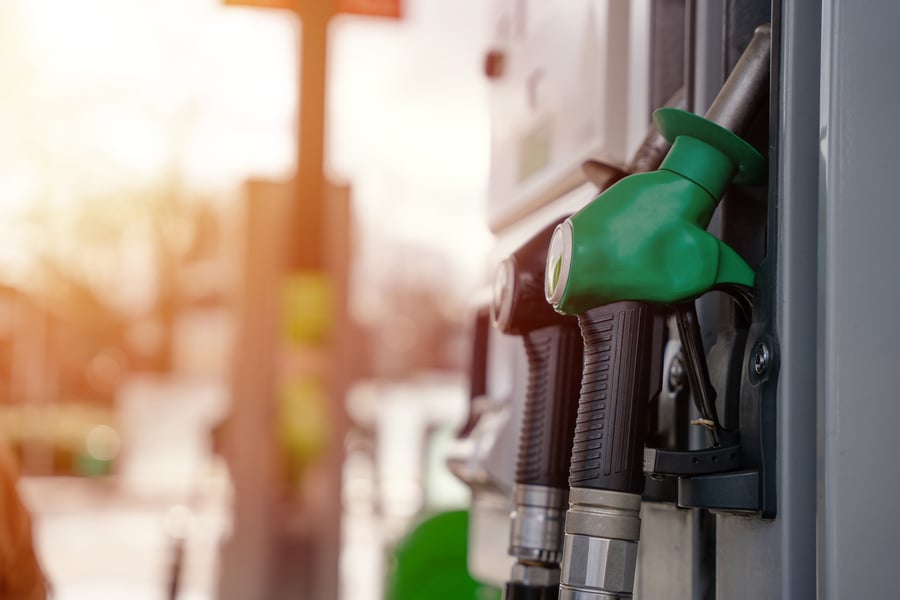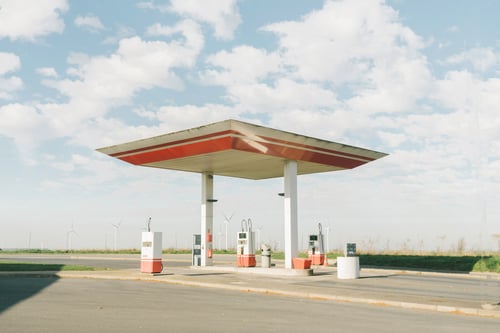
As a convenience store or gas station operator, understanding customer behavior at the pump and implementing effective safety measures are crucial for success.
In fact, the 2024 National Association of Convenience Stores (NACS) Consumer Fuels Survey shows that safety is the No. 1 factor when it comes to choosing to shop at a specific c-store – with 70 percent surveyed calling it “very important”.
“Whether or not drivers do go out of their way to visit a store, it’s clear the basics are more important than ever. Safety and cleanliness, the top two attributes, are even more important to consumers than a year ago,”wrote Jeff Lenard and Adam Rosenblatt for NCAS.
Let’s take a closer look at the latest insights into consumer habits at the pump and essential safety tips for both operators and customers.
Customer Behavior at the Pump Returning to Pre-Pandemic Levels
One of the biggest takeaways from the latest NACS Consumer Fuels Survey is that customer behavior at the pump is slowly returning to pre-pandemic norms.
“As it relates to convenience retailing, the newest survey shows several signs that overall consumer behavior is creeping closer to what it was like before the pandemic,” said the NACS. “The morning commute continues to see more traffic as businesses are increasingly encouraging workers to return to their offices.”
The survey found Americans still pessimistic about the economy overall with 56 percent pessimistic but that is a marked improvement from 2023 when 66 percent were pessimistic.
Interestingly after several years of inflation, customer pump behavior has adjusted with drivers less concerned about gas prices and less anger directed at local retailers for gas prices.
“That’s all definitely good news. But the findings from the 2024 NACS Consumer Fuels Survey also show that the consumer psyche is still shaken four years after the start of the pandemic. Winning customers is still a fight,” concluded Lenard and Rosenblatt in their article.
Price Sensitivity at the Pump: Drivers Adjust
While 89 percent of drivers say gas prices impact their feelings about the economy, there's a slight decrease in price sensitivity compared to previous years. This shift suggests that consumers are becoming more adaptable to price fluctuations, potentially due to increased fuel efficiency in vehicles or changes in commuting patterns.
How big of an adjustment have drivers made for pricing? Consider that in previous surveys, drivers cited $4.50 as the gas price at which they would reduce the amount they drive and $5.50 as the price at which they would seek out alternatives to driving or dramatically cut back.
Fast forward to 2024 and consumers now say $6.24 is the price at which they would change their fuel purchasing behavior and $7.11 is the price at which they would seek alternatives to driving.
“The survey suggests that inflation may be having an unintended ripple effect on consumers’ sensitivity towards gas prices, as Americans have grown accustomed to rising prices across all parts of the economy,” said the NACS. “For most, buying gas is not a discretionary purchase but rather something requisite to accomplish other things in their lives. To that end, the price of gas remains the dominant factor in where they choose to fuel up.”
When consumers were asked which of these factors was the most important when buying gas said:
- Price: 70 percent (up from 68 percent in 2023).
- Location: 20 percent (down from 21 percent).
- Brand: 10 percent (down from 12 percent).
In-Store Attributes that Helps Attract Customers
While price was the No. 1 factor cited by consumers in the NACS survey when asked “why do you prefer a specific gas station or chain” it was far from the only factor in the equation.
“Gas prices certainly are a big reason that drivers go to your store, but there are other opportunities to win them over beyond the price at the pump,” said the NACS.
Here is what the survey revealed about why drivers choose a specific gas station or chain:
- 56 percent: It usually has lower prices.
- 48 percent: Location of a particular store.
- 46 percent: Quality of fuel.
- 39 percent: Loyalty program with store/chain.
- 20 percent: Quality of other items inside the store.
- 19 percent: Quality of prepared food/drinks.
- 19 percent: Quality of employees.
- 18 percent: Restrooms/cleanliness.
Opportunities Inside the C-Store
One of the keys to pump behavior for c-store or gas station operators is understanding what drives consumers inside the store when they visit.
Nearly three in five drivers (58 percent) said they went inside the store the last time they fueled up their vehicle.
The reasons for going inside are varied from “nature calling” to the need to fuel up the body with food and drink. Here is what the survey said customers did the last time they went inside a c-store:
- 46 percent bought a drink (fountain or packaged).
- 46 percent paid for gas at the register.
- 39 percent bought a snack.
- 26 percent used the bathroom.
- 25 percent bought a sandwich or meal.
- 23 percent bought cigarettes or vaping products.
- 22 percent bought lottery tickets.
- 13 percent used the ATM.
- 13 percent bought gum/mints.
- 11 percent bought beer/wine.
“And as meals grow in popularity, so do beverages, which consistently remain a leading reason why customers come inside the store,” said the NACS.
Safety First: Why Consumers Choose to Shop at a Specific C-Store
The survey found that consumers are willing to inconvenience themselves to choose a convenience store they like with 74 percent saying they would make a tough left-hand turn across a busy street and 73 percent saying they would drive five minutes out of their way.
“That’s a huge shift in behavior from just a decade ago,” said the NACS.
The survey showed (with multiple selections permitted) these were the most important factors when choosing to shop at a specific c-store:
- Safety: 70 percent.
- Cleanliness: 66 percent.
- In and out quickly: 51 percent.
- Friendly employees: 46 percent.
- Availability of products: 45 percent.
- Quality of food/meals: 39 percent.
- Cares about the community: 34 percent.
- Loyalty/reward program: 34 percent.
Actionable Strategies for Operators
Based on these customer behavior insights, here are expanded strategies for gas station and c-store operators:
Pricing Strategy: While price remains important, it's not the sole factor in attracting customers. Consider implementing:o Dynamic pricing models that adjust based on local competition and demand.
o Loyalty programs that offer cumulative discounts or rewards.
o Bundle deals combining fuel purchases with in-store items.
Enhancing In-Store Experience: To capitalize on the high percentage of customers entering the store, focus on:o Optimizing store layout for easy navigation and product visibility.
o Offering a diverse range of high-quality, fresh food options.
o Creating attractive displays near the entrance and checkout areas.
o Implementing digital signage to promote special offers and new products.
Building Customer Loyalty: Develop programs that go beyond price to build lasting customer relationships:o Personalized mobile apps with tailored offers and easy payment options.
o Community engagement initiatives and local partnerships.
o Exceptional customer service training for all staff members.
Safety Measures for Operators
Implementing robust safety measures is essential for protecting your business, employees, and customers.
“Owning a gas station can be a profitable and rewarding bus but there are unique risks you need to manage,” says fueling facility construction company Wayne Perry.
Here are some safety tips for operators:
- Lighting: Invest in high-quality indoor and outdoor lighting to deter crime and improve visibility.
- Surveillance: Install security cameras in key areas, including pumps, fuel delivery areas, and store interiors.
- Equipment Maintenance: Regularly check breakaway connectors on pumps to prevent accidents.
- Staff Training: Ensure employees are well-versed in safety protocols and incident management.
- Signage: Display clear safety warnings and precautions at every pump island.
Operators also need to protect their pumps from criminal intent from card skimmers to drive-offs.
“A credit card skimmer is a device that transfers data from your credit card’s stripe,” Chris Hauk, consumer privacy champion at online privacy and security site Pixel Privacy, told Reader’s Digest. “Skimmers are usually found on gas pumps or other point-of-sale devices, in areas that aren’t being monitored every minute of the day, as this allows the bad guys time to install a skimmer on a pump without being observed.”
Key strategies to combat card skimmers for operators include:
- Regularly inspect card readers for loose parts or other unusual signs.
- Use tamper-resistant security seals to card readers.
- Promote contactless payment.
- Remind customers to shield the PIN pad when entering data.
- Monitor suspicious activity at your pumps or point-of-sale.
- Choose secure card readers with advanced chip technology.
- Educate your staff to recognize potential signs of skimming.
- Consider the use of security cameras to deter criminals.
- Regularly update software.
Customer Safety Tips and Enhancing Their Experience
Educate your customers on these important safety practices5:
- Refueling Etiquette: Turn off the engine and avoid re-entering the vehicle while fueling to prevent static electricity buildup.
- Distraction-Free Fueling: Discourage cell phone use while pumping gas to maintain situational awareness.
- Proper Tank Filling: Advise against overfilling tanks to prevent spills and potential hazards.
- Child Safety: Recommend keeping children inside the vehicle during refueling.
- Valuables Protection: Encourage customers to keep valuables out of sight and doors locked while pumping gas.
To create a safer and more appealing environment for your customers:
- Optimal Illumination: Ensure even light distribution throughout your station, focusing on canopy areas, walkways, and store entrances.
- User-Friendly Design: Implement clear signage and intuitive pump layouts to enhance customer experience.
- Technological Integration: Consider offering self-service options and mobile payment solutions to cater to evolving customer preferences.
- Environmental Considerations: Minimize light pollution while maintaining adequate illumination for safety.
By implementing these insights and safety measures, you can create a secure, efficient, and appealing environment that attracts and retains customers while prioritizing their safety and satisfaction.
Contact PWM today for cutting edge electronic price signage that guarantees your c-store or gas station a great first impression.






